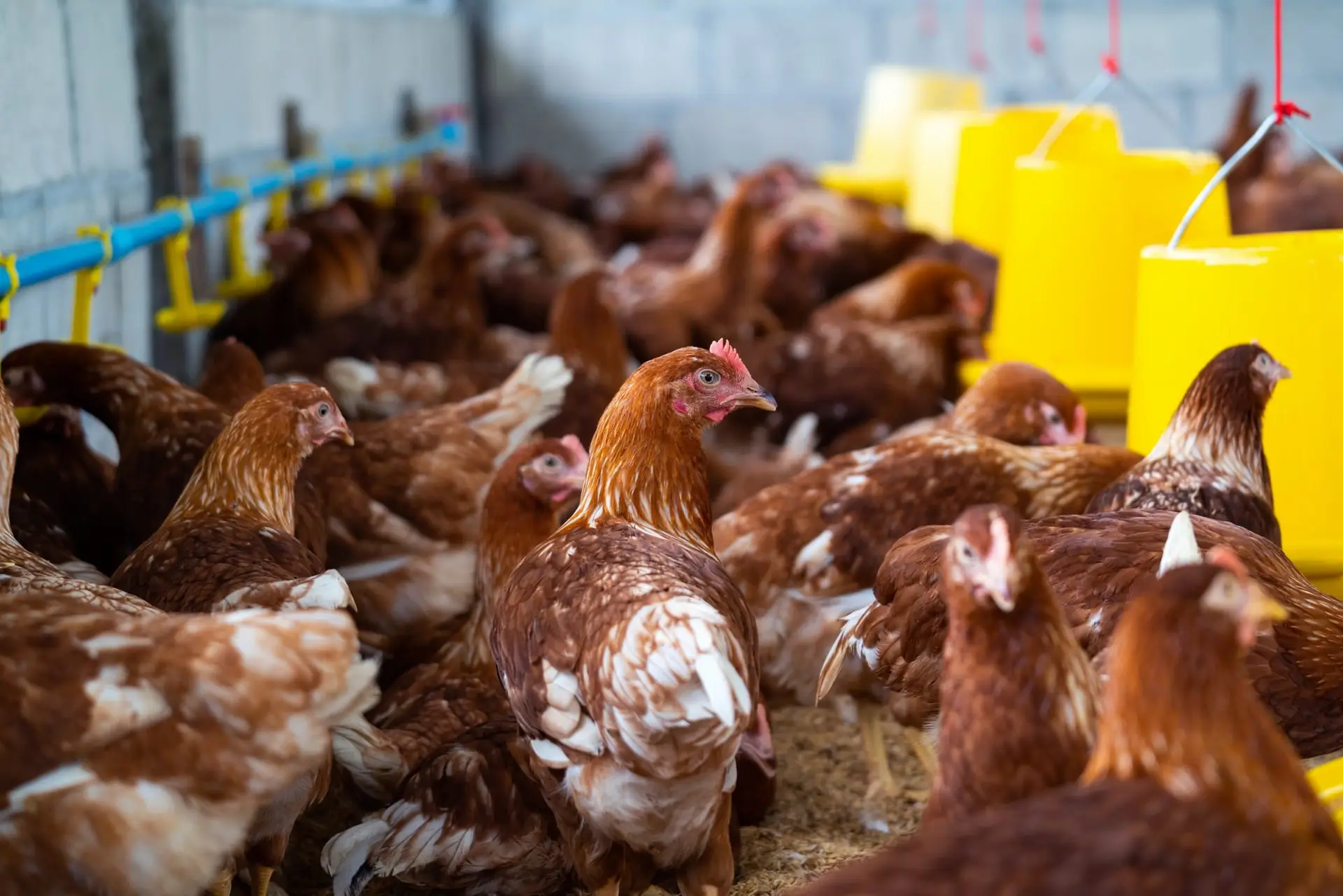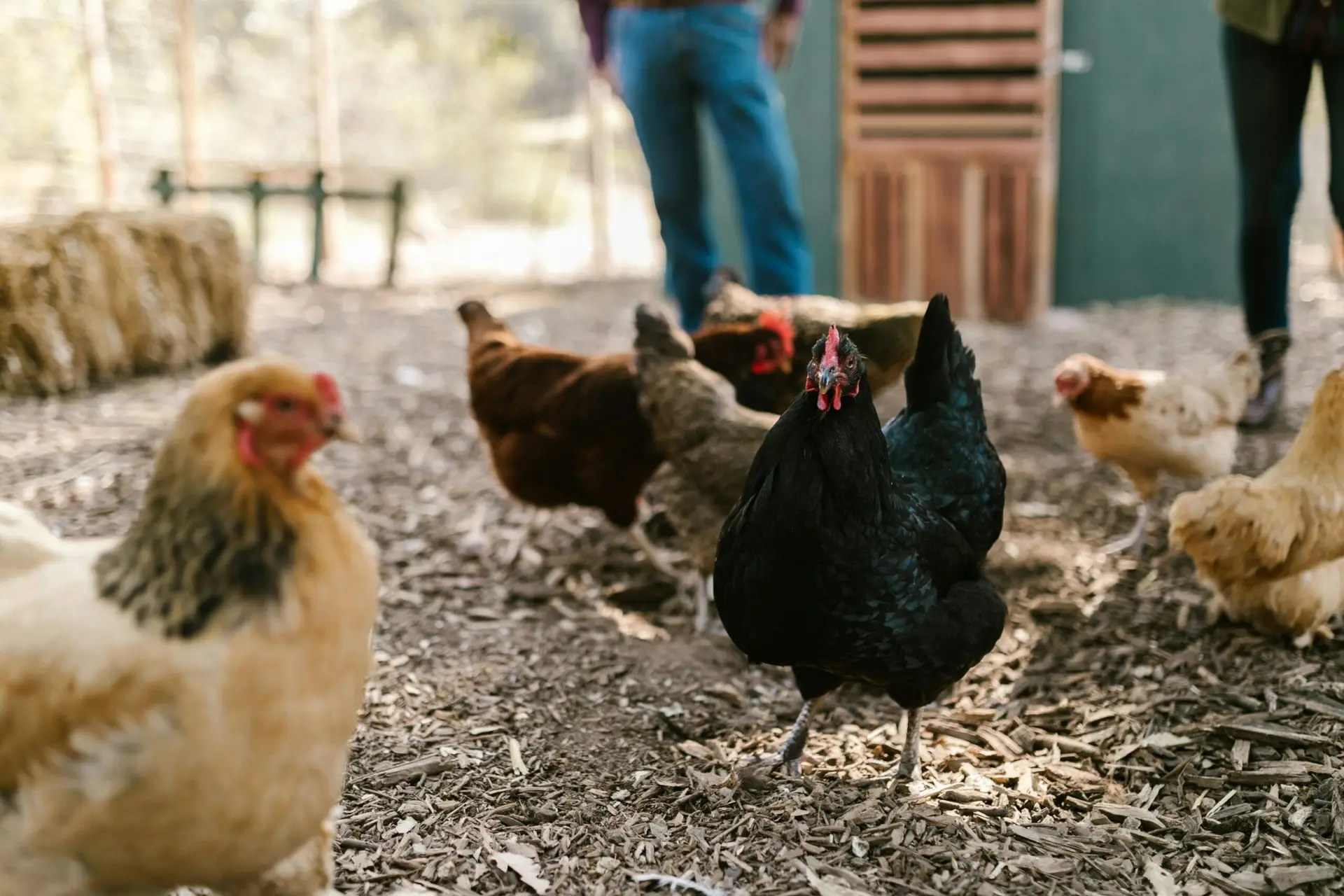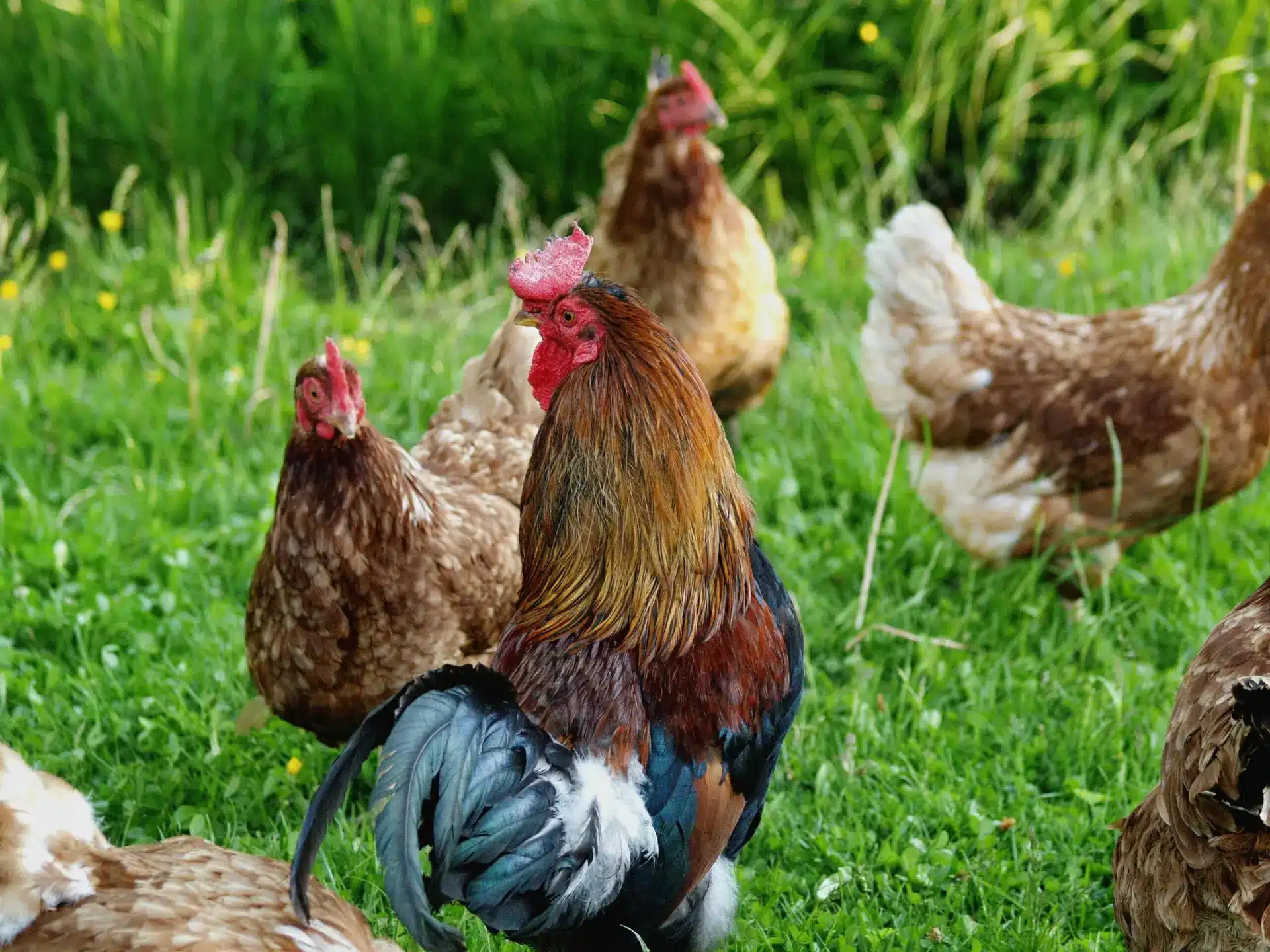Chickens can be kept in tight spaces and still lay plenty of eggs, but that doesn’t mean they’re happy. Have you ever wondered how chickens would live if they had a choice? The best clues come from their wild relatives in Asia, where chickens originated. Studies show that chickens were mostly domesticated from red jungle fowl, so looking at the habitats and behaviors of these wild birds can help us create better environments for domestic chickens to act naturally. Let’s explore some common questions about chickens using what we know about red jungle fowl.
What’s the Ideal Flock Size?
In most backyard or farm settings, chickens are kept in large groups. However, research on red jungle fowl in India reveals that their flocks are surprisingly small.
- Non-breeding flocks: Usually 1 rooster with 1–4 hens, occasionally joined by 1 or 2 subordinate roosters.
- Younger males: Often form single-sex groups of 2–4.
- Breeding hens: Nest alone in spring to lay and incubate their clutch of 3–7 eggs. Once the chicks hatch, the hen raises them independently and doesn’t rejoin a flock during this time.
I was shocked to learn how small their groups are. When I started my flock, I was told I’d need at least 6 birds for their social needs, but that advice doesn’t seem to hold up.
How Much Room Should Chickens Have?
A study found that a group of 5 red jungle fowl typically occupies about 12.5 acres—an average of 1 bird per 2.5 acres! Compare that to the standard recommendation of 4–10 square feet per bird in captivity. Chickens naturally spread out and cover large areas when they can.

How Active Are Chickens?
Some people believe that as long as chickens have enough food and water, they’ll be content to stay in one place. But my experience tells me otherwise—my birds dash outside the moment I open the door. This lines up with the daily routine of wild red jungle fowl:
- Morning: About 5 hours of foraging, starting with a trip to the water hole.
- Afternoon: Resting and dust bathing in shady, dense vegetation during the hottest part of the day.
- Evening: 2–3 more hours of foraging as they make their way back to the water hole for a final drink before roosting.
In total, they spend 7–8 hours foraging every day!

What’s the Best Habitat for Chickens?
We often picture chickens on open lawns or pastures, but their wild counterparts thrive in habitats with more variety and cover. Red jungle fowl in India are found in:
- Young forests (“second growth”)
- Forest edges
- Shrubby or scrubby areas
- Bamboo forests
- Tall bunchgrass patches (great for nesting, as they provide cover for chicks and easy movement in open areas between grass clumps)
- Cultivated fields (where they feed on crops)
These birds move between habitats to take advantage of seasonal food sources, like berries ripening in scrubland.
What Do Chickens Love to Eat?
Red jungle fowl have a highly varied diet, which explains why chickens like so many different foods:
- Plants: Seeds from 30+ plant species, grasses, bamboo shoots, leaves, and flower petals.
- Insects and more: Spiders, snails, caterpillars, worms, and even lizards. Termites are a key protein source for chicks.


Pingback: Can Chickens Have Mushrooms? Safe & Poisonous Guide - FarmBackyard